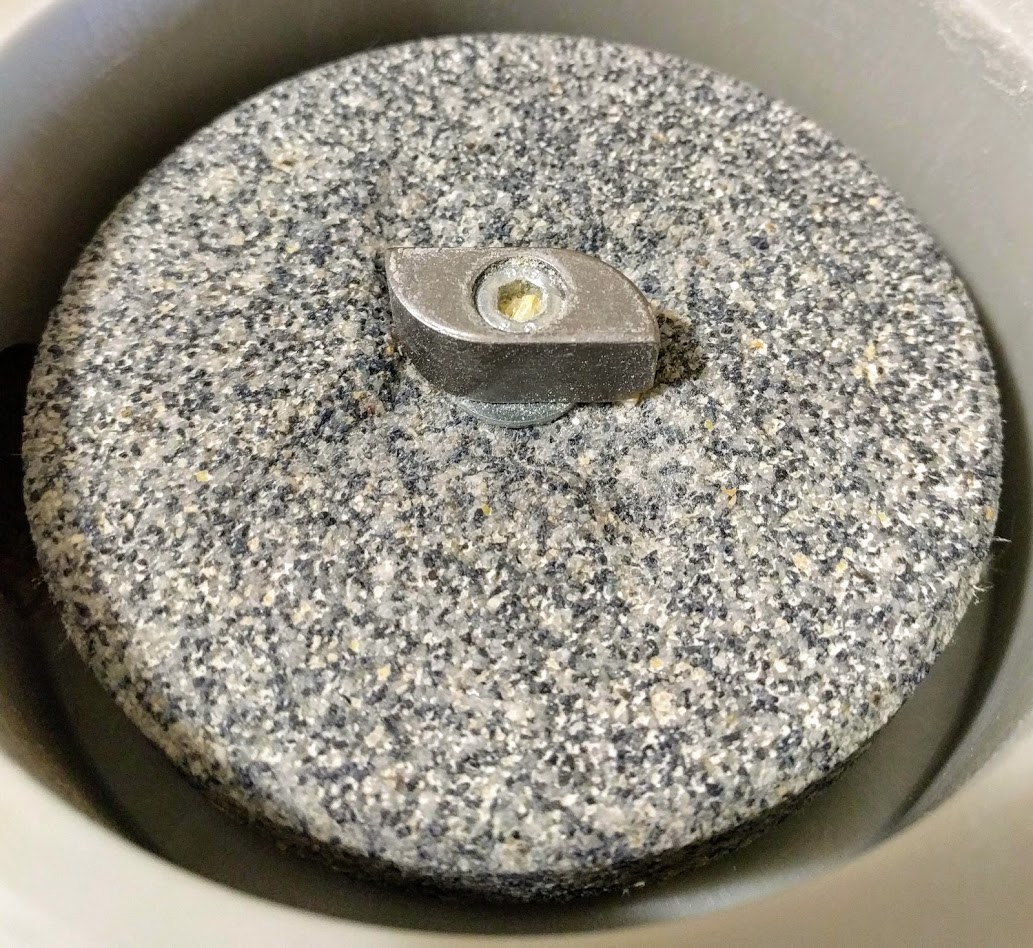
Cleaning the stones on a MockMill 100
I have a MockMill 100 and I use it to grind hard Montana wheat. (only about one cup of wheat at a time but several times a week). The grind has slowed down and the quality has suffered recently. I pulled it apart to look at the stones and they are completely gummed up with what I assume is the oily wheat germ. It is too gummed up to come clean just by grinding at a coarser setting.
The top stone comes right off and I was able to get it nice and clean but I'm not sure how (or if it's OK) to remove the bottom stone for cleaning.
I find a hex head screw in the center of the bottom stone and I have the correct size ---- but I don't know:
#1 - is it safe for the end users to remove that stone for cleaning?
#2 - does screw turn CW or CCW to loosen?
#3 - how do I lock the stone from turning while I loosen the screw?
thanks in advance if anyone knows.
EDIT: Since posting this question, I have managed to clean the stones in place and all is well :) But I'm still curious to know how to remove the bottom stone if anyone knows. Thanks!


I thought rice was the “cleaning” grain. otherwise I would email Mockmill directly. They are really helpful.
I didn't try Rice but I thought about it. And I plan to run some rice thru it to clean out any stone particles that might come out after my cleaning.
I have sent an email off to Mockmill and when I hear back from them I'll update the thread here. :)
Rice is the way to go. Here are some instructional videos with additional details. https://mockmill.us/support/
-Brad
Andy, I grind hard white wheat very regularly, and normally do not have a problem with gummy up the wheels. I have had gumming up once or twice, and it was because the berries had too much moisture - I had soaked them to sprout them and did not thoroughly dry them before grinding. While there are some grains that are oily and can gum up a stone, I don't think that is an issue with hard winter wheat.
Hi Andy - just curious as I'm still on the fence about getting a mill. Did you notice any degradation in the surface of the stone that would indicate wear and as a result particles of stone (however small) are getting into your flour. Thanks in advance..
No I do not see any wear in the stones and I don't have any sense that there are stone particles getting in my flour. The material that Mockmill uses in their stones is very hard (carborundum I believe?).
For about 40 years I have used the concentric ring type impact grinders instead of stone. There is no contact at all between the grinding surfaces on those machines -- but the main drawback was the high pitched whine noise and the mess of flour dust everywhere and the slow speed of grinding.
The Mockmill is quieter, the flour pours out into an open container without any dust and it's faster (when the stones are clean). I use the Mockmill in my kitchen - the impact grinder had to be outside or in the garage or in a separate room due to the dust.
I should have taken a picture of my stones before I cleaned them - they weren't worn at all just had a thick layer of gum on them and I'm sure it is my own fault. It's fairly humid (been raining a lot) so my wheat has surely picked up some moisture - and I have been grinding extremely fine and also regrinding a second time whatever doesn't go thru my sifting mesh. (I'm going to stop doing that). Here are pictures of my stone surfaces (now that I've cleaned them) so you can see how they look after a year of use (light use - I only grind enough for one, small loaf about every other day).
Good information..